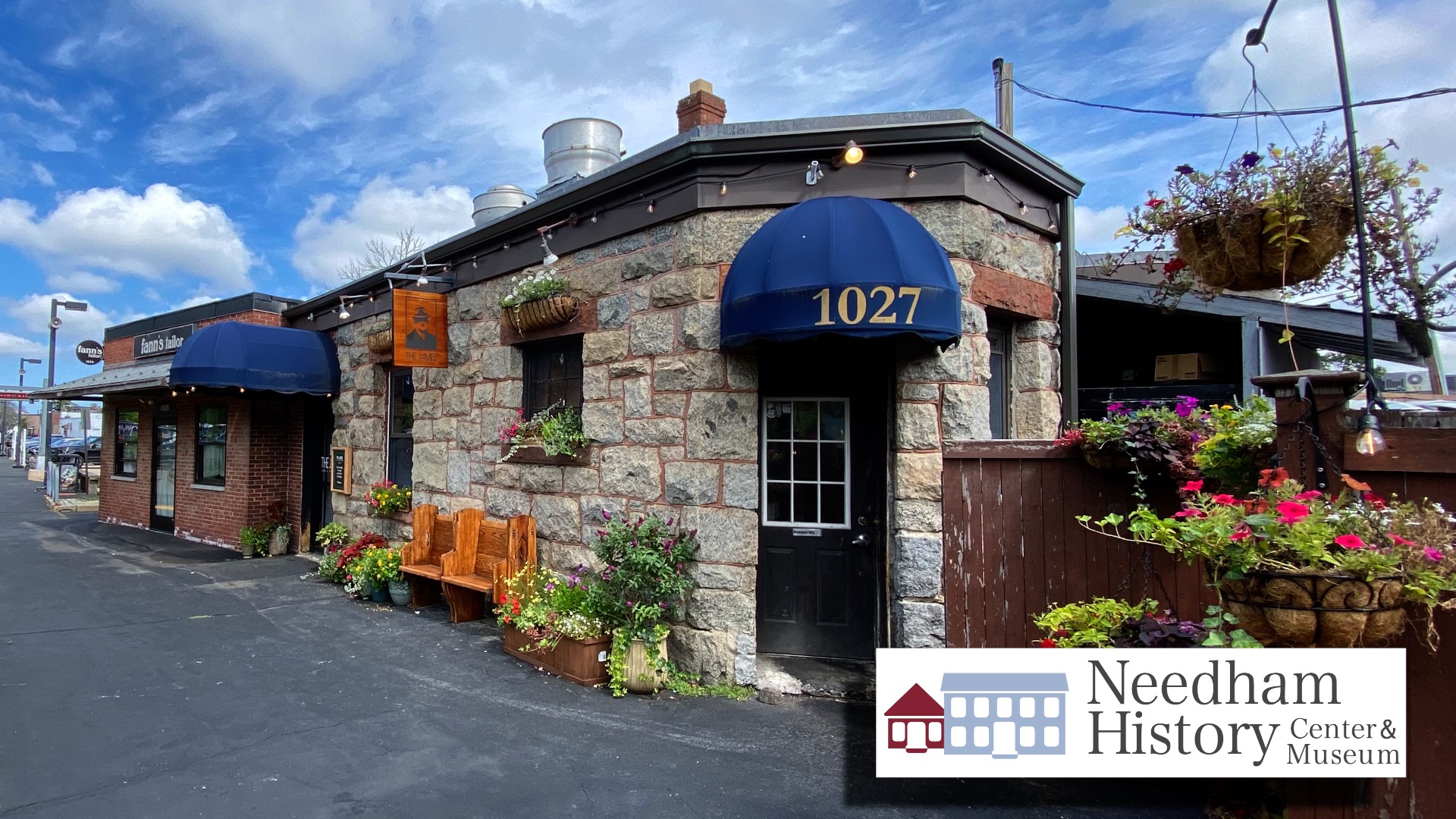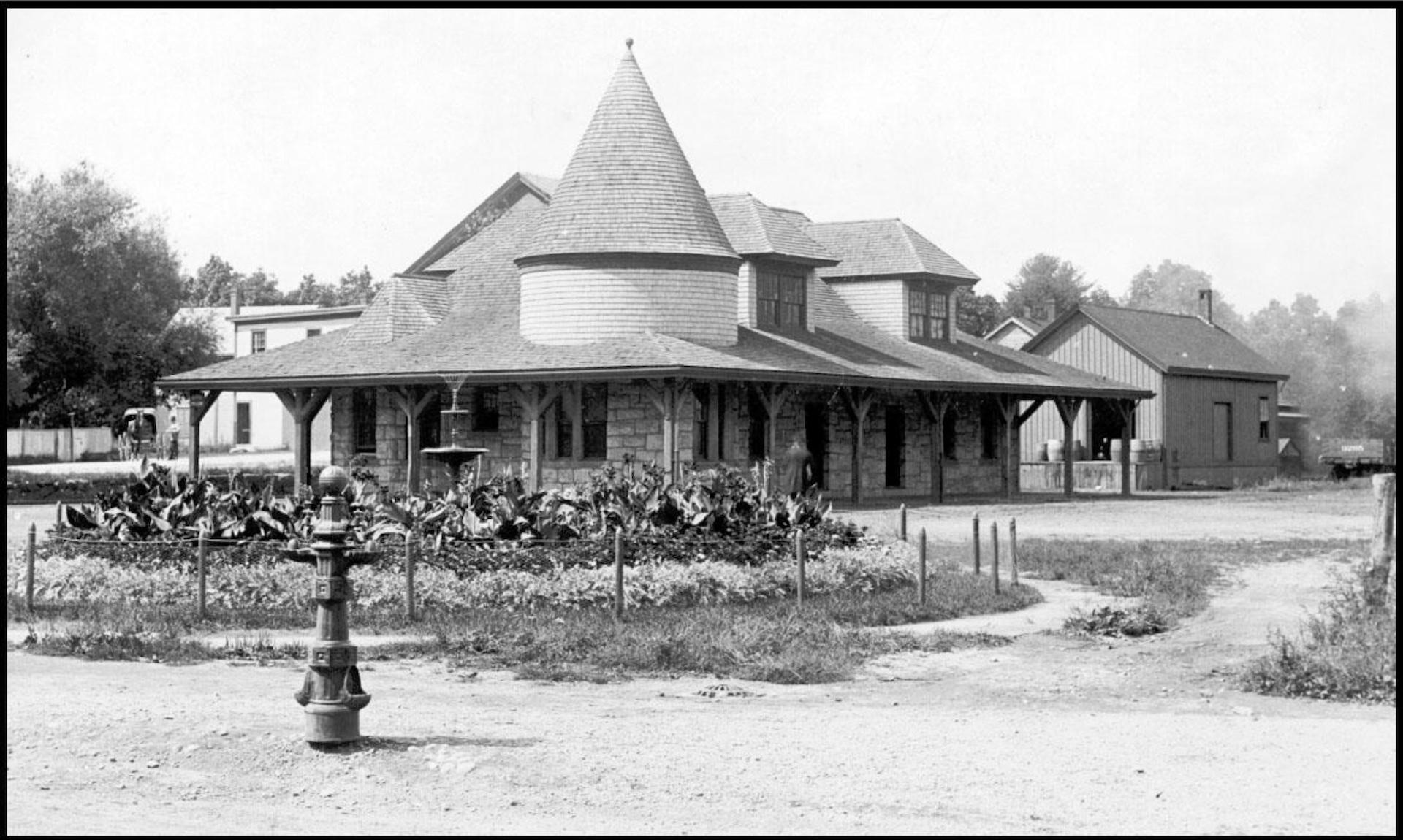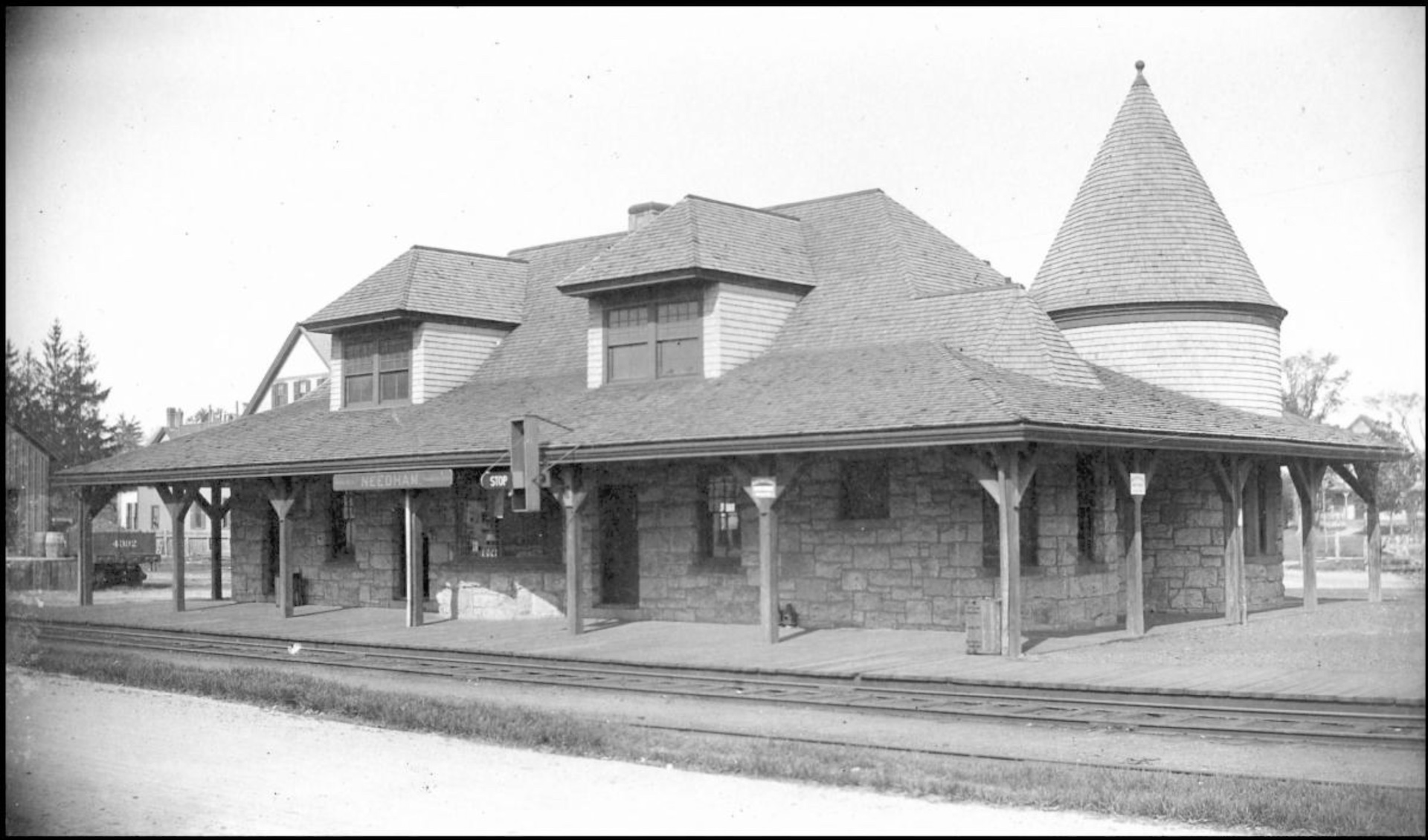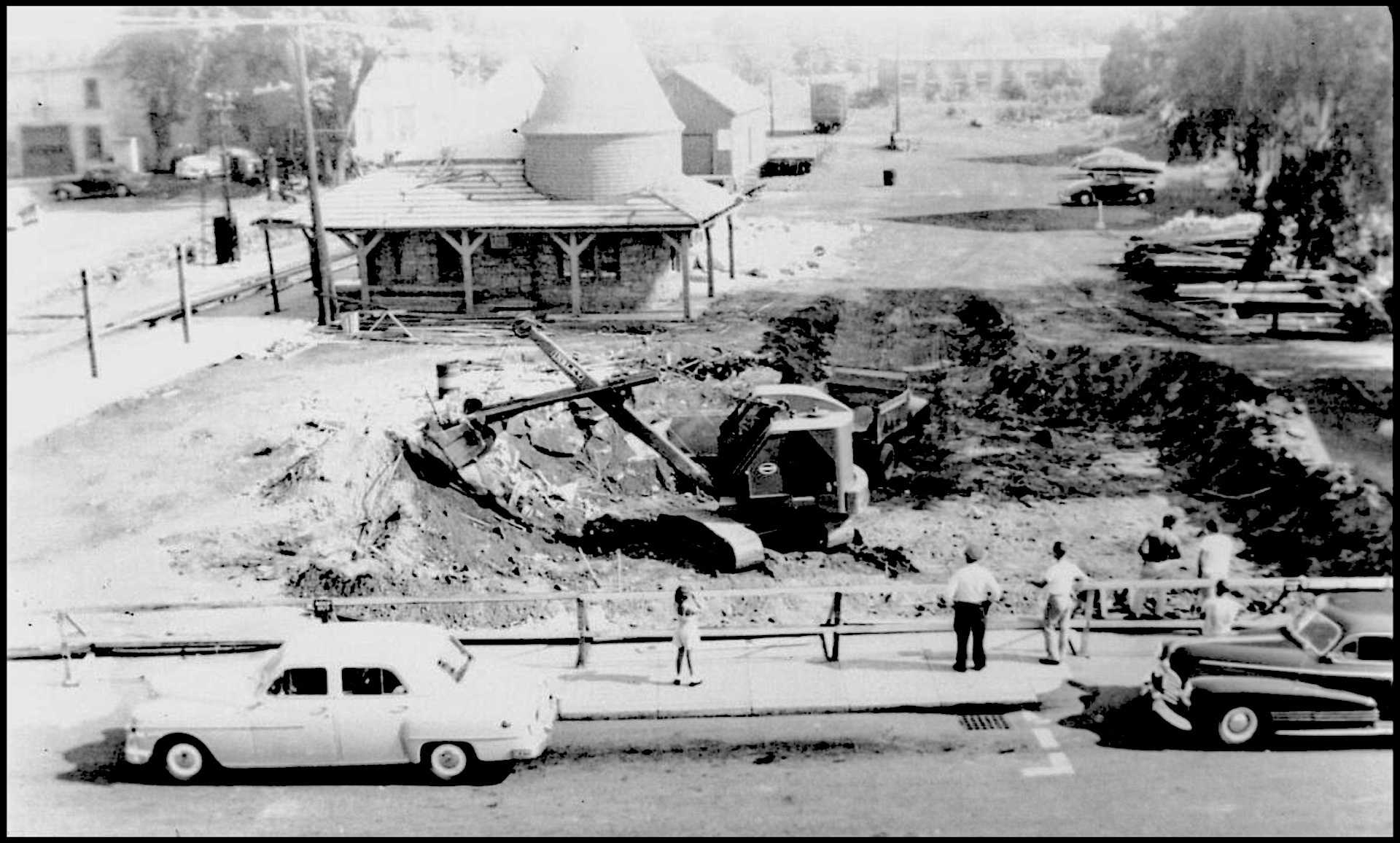
Needham History: What Happened to Center Station?
We hardly notice it now, but it was once quite special


Two views of Needham Center Station when it was new, circa 1890. The top view is of the southeast corner, looking from Great Plain Avenue, with the hitching post along the curb. The garden with the small fountain was known as the Depot Mound, and was a feature of the Center Station from 1857 to 1924. The bottom view is of the west (track) side. The buildings in the background are the coal sheds and other rail yard necessities.
What Happened to Center Station?
Center Station is, as they say, a mere shadow of its former self. It no longer serves as a railroad station – half is now a tailor’s shop, and other half has been a restaurant for many years. It has been altered and truncated several times. The tailor’s half is a brick add-on that replaced part of the original stone structure. The restaurant half retains the original stone walls, but is missing the old roof and much of the former detail. Sad, really, because the station was once quite beautiful.
Train stations were built at Needham Center and Needham Heights in the 1850s, when the train line through East Needham (destination: Woonsocket) was built. The train provided passenger service that made local travel easy, and opened up Needham to new products and residents. With the new ease of transportation, merchants were able to expand both their offerings and the reach of their markets. Boston-dwellers looking to escape the increasingly crowded and filthy city could commute to their new homes in Needham and still work in the city. The train line was a watershed event in Needham’s history, and greatly accelerated the town’s growth and prosperity over the next few decades.
The Center and Heights Stations were originally wooden sheds, built to give passengers a place to wait and shelter from the rain, but not much more. Anyone who lived in Needham before the 1980s probably remembers that tattered and derelict Heights Station shed that preceded the current glass-block shelter.
The shed at Needham Center had a different fate. In 1887, it burned down as a result of the huge fire that destroyed the Odd Fellows Hall on the corner of Chapel Street. It was nearby. It was made of flimsy wood. It didn’t stand a chance.
The resulting replacement was a great improvement, and reflected the growing importance of the railroad. It was built of stone to signify permanence, with a swooping roofline and a conical turret. Around this time, a contract for new stations along the Boston & Albany Line had been awarded to the firm of H.H. Richardson, famous as the architect of Trinity Church in Boston, among others. These were lovely works of art, small stone mansions marking the path of this modern mode of transportation. Many of these stations are now gone, but the surviving Richardson stations are now designated landmarks, and survive in new guises – including Wellesley Hills (now a coffee shop), Newton Center (now a restaurant), and Newton Highlands (now a dentist’s office), and a particularly fine one at Framingham (now a restaurant).
Needham’s line was a spur line of the B&A, but sadly not included in this contract. I have been unsuccessful in discovering who designed and/or built our station. It was not Richardson’s firm, but it was clearly Richardson-adjacent and took its inspiration from the stations on the main line. It shared the pink and brown stonework, the swooping roofline, and the dormers. It had a conical turret on the southeast corner, which then fronted on Great Plain Avenue. The approach from the street was ornamented by a small garden with a fountain, known as the Depot Mound.
Alas, modern life began to chip away Center Station. The Depot Mound was leveled in the 1920s. In the 1950s, shops were built along Great Plain Avenue, hiding the station behind them and closing off the view from the street. The roof turret was removed and the roof flattened around the same time. The MBTA demolished the northern half of the building and replaced it with a plain brick addition for use as a ticket office in the 1960s or 70s.
However, there is still a remnant of the old station to be seen. The southern half, which has been the location for several restaurants in the last 30 years (most recently The James Pub) still survives. Sheds and other add-ons have obscured the shape, but the rounded southeast corner remains, as does the pink and brown stonework. If I stand in the alley from Great Plain Avenue and squint real hard, I can sometimes still see the turret.
A row of stores was built on Great Plain Avenue in front of the station in 1950; these are the storefronts that currently house Rice Barn and Architrave. The roof of the station was flattened soon afterward, and one half was removed and rebuilt into a brick ticket office.

 |
Gloria Polizzotti Greis is the Executive Director of the Needham History Center & Museum. For more information, please see their website at www.needhamhistory.org. |

